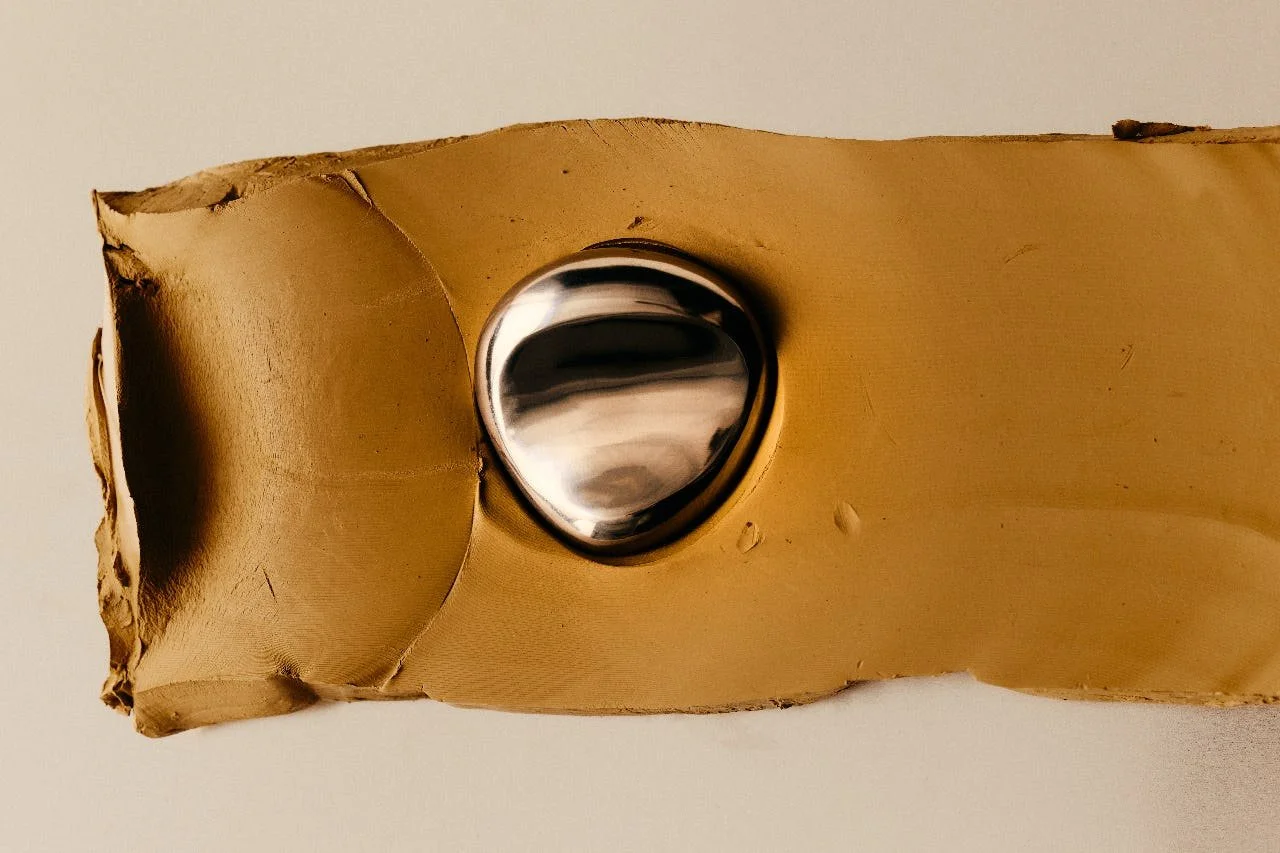The architecture of kick-ass brands.
How do you build a brand as strong as the big players without hiring the world's top agencies?
I've spent the last decade and a half as a Designer and Art Director watching the same pattern repeat: brilliant founders with great products stumble at the starting line because of how they approach or ignore brand work.
This isn't another article telling you to "invest in your brand" or hire expensive agencies. It's about understanding what actually matters, when it matters, and how to build a brand foundation that grows with you instead of holding you back.
When design breaks trust before launch
Bad design erodes trust before anyone experiences your product. Clumsy visuals, inconsistent typography, or clunky systems send a silent message: "This might not be ready, this might not be reliable." Trust breaks before the first interaction.
Occasionally, an exceptional product can overcome poor design, but this is rare, and the path is painfully slow. Poor design creates subconscious friction that slows adoption and forces marketing to compensate with extra effort and budget.
The opposite is equally damaging. Sleek interfaces, polished packaging, and beautiful campaigns might drive initial conversions, but if paired with a poor product experience or weak customer support, users will leave, and worse, they'll tell others. The aesthetic appeal becomes a false promise that accelerates disappointment.
Brand foundation + design excellence + ability to evolve = kick-ass brand
The designer trap, when beautiful assets don't move the needle
Here's what happens too often: A founder hires a designer, the designer delivers a beautiful brand identity: logo, colours, typography, maybe some templates, it looks professional, and expensive, everyone is happy.
But six months later, the team doesn't know how to use the assets consistently, and every decision requires debate because there's no clear framework.
This is the designer trap: visual identity without brand foundation.
Most designers are trained to solve problems creatively; that's the foundation of good design. But translating that skill into brand strategy requires something design school doesn't always teach: understanding how businesses grow, how founders make decisions, and how brand choices compound over time.
Early in their careers, many designers naturally focus on craft and aesthetics; it's what they've been trained to do and where they feel most confident. But the designers who become truly valuable to founders are the ones who've learned to bridge creativity and business strategy, who understand that their real job isn't just visual execution, it's bringing clarity to complex business challenges.
This evolution takes curiosity, time, and real-world experience, it means asking foundational questions before exploring any visual direction: What problem are you solving? Why should people care? What do you believe makes you different?
When these questions get skipped, whether because the designer doesn't ask them or because founders don't create space for them, the work naturally gravitates toward the surface. Not because anyone lacks skill, but because, without strategic context, there's nothing deeper to express.
The best brand work happens when both sides understand this: design isn't about making things look good, it's about making strategy visible and actionable. When that alignment exists, visual work becomes meaningful instead of arbitrary. It helps founders move faster because every choice is rooted in something true about the business, not just what looks impressive.
What founders actually need:
Brand foundation first: Your story (where you came from), your belief (what you stand for that competitors don't), your purpose (the change you're creating), and your positioning (who you're for and how you're different).
Visual systems built on top: Design that expresses the brand foundation, systems simple enough to allow growth but distinctive enough to be memorable, choices that feel intentional, not trendy.
When you have both, the brand becomes a decision-making tool, not just a visual style guide. This is exactly why delaying brand work compounds costs without a foundation, you're constantly rebuilding instead of evolving.
Foundation first: The brand systems built to scale
Stop thinking about brand as logos and colour palettes, and start thinking about it as architecture.
A brand foundation is strategic, flexible, and built to grow. A visual identity, the logos, colours and typography, is just the visible layer. Most founders invest backwards: they obsess over the surface while ignoring the structure beneath, or they simply ignore the whole thing at once.
What you actually need from day one:
Building a brand that scales requires working in layers, each one building on the previous:
Phase 1: Clarity, the questions that matter
Before anything visual, you need answers to foundational questions: What's your story, and why does your perspective matter? What do you believe that your competitors don't? Who are you really for, and what's the change you're trying to create? What's your brand personality? How should you sound and feel?
This isn't philosophical, it's practical, these answers become filters for every decision that follows.
Phase 2: Discovery, translating strategy into visuals
Once you have clarity, you need art direction: What should your brand look and feel like visually? What aesthetic territory expresses your beliefs? This is where moodboards and visual exploration happen, but rooted in clarity, not pulled from thin air or the latest Pinterest trend.
Phase 3: Momentum, the essentials to start moving
Finally, you need the core assets to begin: a logo or wordmark that's distinctive but simple, typography that reflects your voice, colours that reinforce your positioning, and basic systems flexible enough to grow.
This isn’t about aiming for perfection or investing in a full-scale identity system from day one. But it is about applying solid design principles, because design is the first signal of trust. When design works, it’s almost invisible, nothing feels off, and everything communicates reliability. When it fails, people notice instantly, and they hesitate.
What can evolve later: Detailed brand guidelines, extended photography and video direction, comprehensive campaign systems, and specific applications across all touchpoints are some of the ways the brand can be expanded later.
The goal isn't perfection on day one, it's building on solid ground so evolution feels natural, not disruptive.
As you grow: When to invest deeper
In the early stages, you need enough to move with confidence, but as you gain traction, your brand's needs will evolve.
Signs you're ready for more:
You're hiring beyond the founding team and need systems that others can execute and maintain consistency
Marketing is becoming more sophisticated and multi-channel
You're entering new markets or expanding your offering
This is when you invest in the next layer:
Deeper competitive and audience insights to sharpen positioning. Full visual identity systems, photography and video style direction, digital campaign templates, and extended brand applications. Comprehensive brand guidelines for internal teams and external partners.
Specialised craft depending on your needs: Product design for physical or digital products, packaging design if you're shipping physical goods, custom illustration systems, professional photoshoots, video production for campaigns, motion design for digital experiences, AI experts.
What makes a kick-ass brand
After years of working with founders, here's what I've noticed: Kick-ass brands aren't built on perfect logos or trendy aesthetics. They're built on purpose first.
Throughout the years, I've seen what differentiates companies with great brand approaches from those that struggle: it's not about resources or budget, it's about understanding that brand is built from the inside out, not the outside in.
They start with a clear foundation
The companies with lasting brands know what they believe, who they're for, and why they exist. The ones that struggle make decisions based on what looks good or what's trending, without a foundation to filter those choices.
Their design expresses that foundation
The visual layer isn't decoration, it's the tangible expression of something deeper. This is what I've seen founders get backwards repeatedly: they think strong brands are strong because of great design. The truth is opposite. Strong brands are strong because they have a clear purpose, and the design makes that purpose tangible.
Companies that build visual identity first and try to work on strategy later always end up redoing the work.
They're built to evolve, not to be rigid
The brands that last decades don't look the same as they did at launch, but they feel the same. Why? Because they understand the difference between what should stay fixed and what should flex.
Certain elements need consistency to build recognition, your core visual anchors that make you memorable in a crowded market. But how you apply them, the creative expression, the way you adapt to new contexts, that should evolve.
The difference I've observed: companies with overly rigid rules struggle to grow, and everything looks conventional. Companies with too much flexibility lose coherence; nothing feels connected. But companies with clear foundations and intentional flexibility stay recognisable while adapting naturally.
It's not about being strict or loose, it's about knowing what anchors you and what gives you room to explore.
The path forward
If you're just starting: Focus on clarity, direction, and momentum, the essentials that let you move fast without looking careless. This is the work that prevents expensive resets later.
If you're growing: Invest in the depth that turns your brand from functional to kick-ass. Add the systems, specialised craft, and guidelines that help you scale without losing what makes you distinctive.
Answer that, build on it with intention, and the rest becomes clearer.
This is how you build a brand as strong as the big players without hiring the world's top agencies. Not by copying their polish aesthetics, but by understanding how strong brands are actually built.



